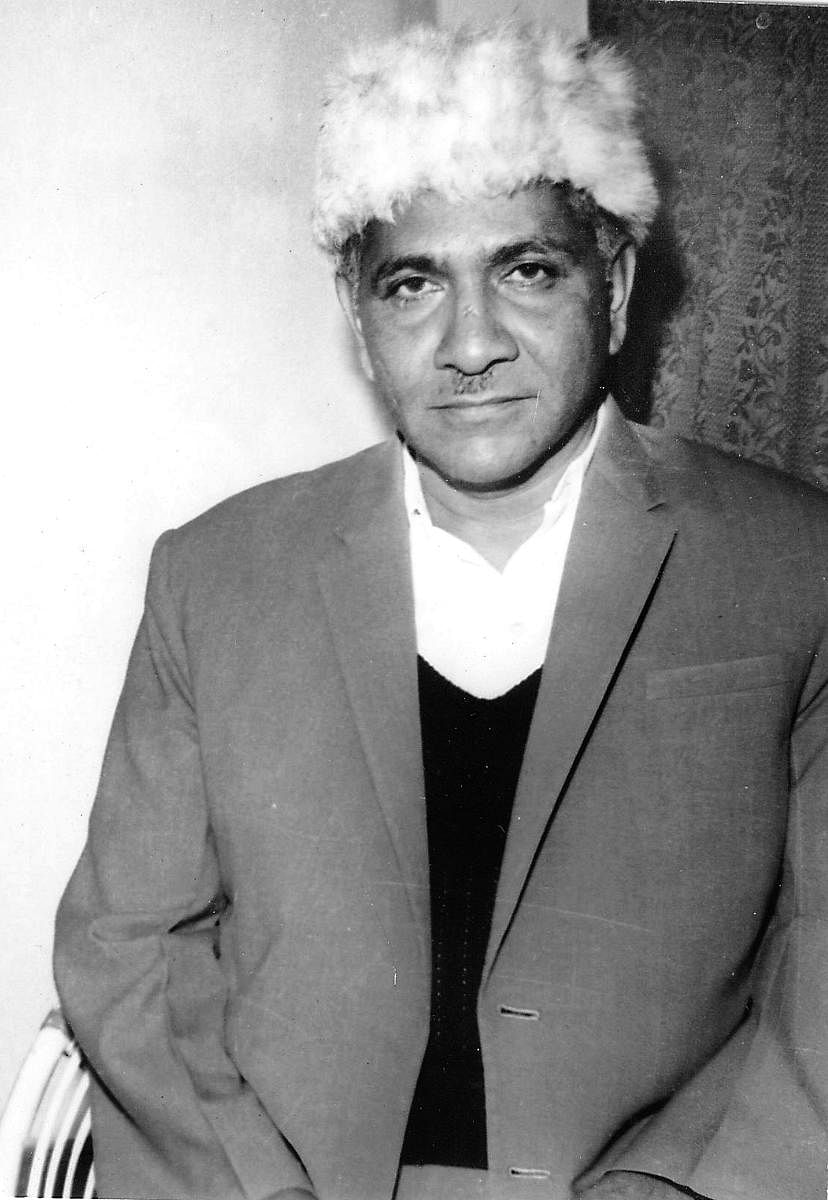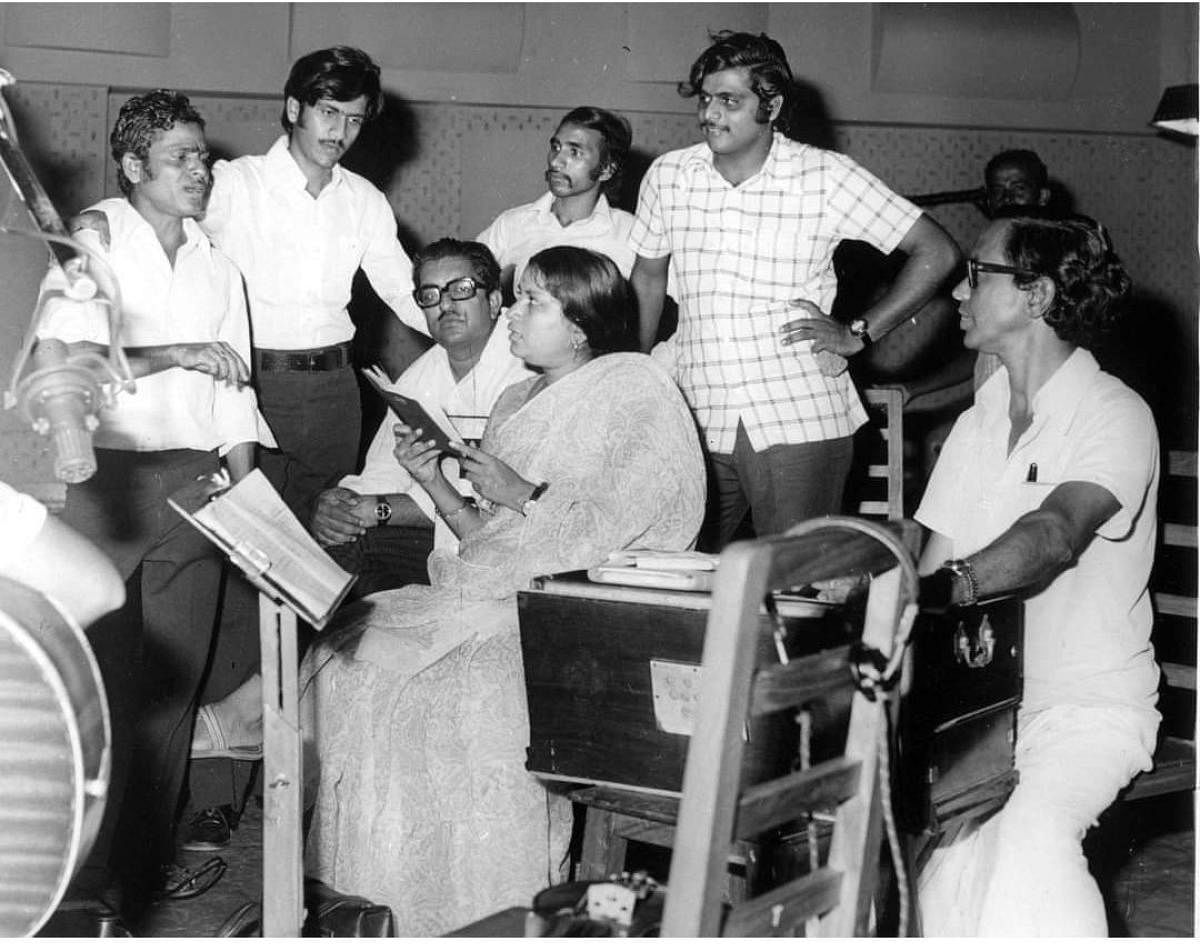

Shankar Singh played a huge role in building the cinema culture in Karnataka. In the 1940s, Madras (now Chennai) was the one-stop point for the production of south Indian films. Shankar Singh broke the trend by making films entirely in Mysore (now Mysuru) under his banner Mahatma Pictures.
‘Krishnaleela’ (1947), his debut as a producer, was the first-ever Kannada film to be made entirely in Karnataka. The Navajyothi Studio in Mysore was like his second home, where he consistently made films from the late 40s with local technicians and artistes.
The evolution of Mahatma Pictures brought the best from other industries to Mysore. MGR’s ‘Maruthanad Elavarasee’ (1950) was shot in Navajyothi. That was the beginning of a long-standing friendship between the legendary Tamil actor and my father.
Around 30 years later, I met MGR when I was shooting near Shivanasamudra Falls with Vishnuvardhan. He didn’t go back without meeting his friend. My father came to Chamarajanagar and we had dinner with MGR.
Mysore became the preferred place for the Hindi film industry as well. Raja Nawathe’s ‘Basant Bahar’ (1956) was made in Navajyothi. The likes of Raj Kapoor and V Shantaram would visit our home to seek suggestions from my father on locations in Mysuru for shoots.
Foreign connection
Alexander Korda, the famous British filmmaker, decided to make a film in Mysore and Bandipur region. This was a time when my father and his friend B Vittalacharya were dreaming of launching Mahatma Pictures.
Korda needed a local actor for his film ‘Elephant Boy’ and my father asked him to try Sabu, a mahout. Popularly called Sabu Dastagir, he became a prominent name in Hollywood from the 1940s to the 60s. To Indians, he was ‘Mysore Sabu’, who came back to the city to set up a studio but failed due to lack of government support.
Kannada cinema’s struggles
Before the rise of Mahatma Pictures, Kannada cinema was nearly extinct in the state. The Kempegowda Road in Bengaluru was home to Tamil and Hindi films. Kannada films would struggle for screens. My father was a Congress KPCC member and a Municipal councillor. He used his influence to get screens exclusively for Kannada films.
The local people’s indifference towards Kannada films was another problem. The humungous success of one film changed their attitude. Shankar Singh’s maiden directorial ‘Jaganmohini’ (1951) became the first Kannada film to run for 100 days.
As the popular story goes, farmers in Davangere sold their cows to watch the film. The court passed a restraining order but we appealed and won the case. The film opened Kannada cinema’s market and Mahatma Pictures regularly churned out at least two-three films a year.
Pool of artistes
Many gifted artistes emerged from the stables of Mahatma Pictures. Hunsur Krishnamurthy began as a playwright but my father recognised his talent and brought him to films. Kanagal Prabhakara Shastry (writer) and P Kalinga Rao (singer) were also introduced by Shankar Singh.
Rajkumar would proudly say he first put on the greasepaint for Mahatma Pictures’ 'Sri Srinivasa Kalyana' (1952). The legendary comedy duo Narasimharaju and Balakrishna came from our banner. The popular belief is that Puttanna (Kanagal) introduced Ambareesh through ‘Naagarahaavu’ (1972). But the actor grew up in our home and performed in a couple of our films before ‘Naagarahaavu’.
Father’s influence
My father wanted me to become a doctor. He often said ‘filmmaking is like the snake and ladder game. While the highs can be encouraging, the unexpected lows can sink careers. It was my mother Pratima Devi, a popular actor, who supported my interest in filmmaking.
I began as an assistant writer to TaRaSu and Hunsur Krishnamurthy before learning to edit and working as a production manager. Mahatma Pictures was my film school. When I was confident, I told my father I will make a film in colour and did ‘Nagarahole’ (1977).
Indian cinema’s cult figures recognised Shankar Singh’s contribution to the field. It’s a pity that the state government hasn’t named a road or an award after him. My biography on him will soon be out. All the accolades for Shankar Singh are richly deserved.
--Rollercoaster ride--
D Shankar Singh, born on August 15, 1921 in the princely state of Mysore, worked as Brooke Bond tea agent in Arsikere before participating in the Quit India movement in 1942.
Wanting to do something different, he plunged into cinema. Shankar and his friend B Vittalacharya started two touring talkies. He named them Mahatma and Jawahar Touring Talkies. The duo screened films at different venues across Karnataka.
The success of touring talkies helped them to set up Mahatma Pictures in 1946. Kannada films were entirely made in Mysuru under the banner.
Shankar married Pratima Devi after they fell in love on the sets of ‘Krishnaleela’, the first film under Mahatma Pictures’ banners. It was Shankar’s second marriage. Sundarabai was his first wife.
Shankar passed away on September 19, 1979. Pratima Devi, who was a popular actor, died on April 6 this year.
(As told to Vivek M V)